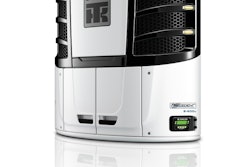The tank and refrigeration trucking industry traversed a rocky road over the past five years, according to IBISWorld industry analyst Lauren Setar, “When the United States sank into recession, manufacturing production, personal consumption and construction activity all contracted.” In light of soft manufacturing performance and weak retail spending, demand for freight transportation declined, the report noted. Although revenue from some markets such as refrigerated food remained relatively stable, reduced consumer spending damaged other markets, such as the automobile carrier segment.
The industry has improved since 2010 due to a combination of increased trade and greater demand from frozen food, chemicals and agriculture, the report noted. The recession-induced dip plus a rebound in the economy and consumer spending has led to a revenue growth rate of just 0.3 percent to $32.6 billion per year on average in the five years to 2012.
Rising fuel prices have created some revenue volatility over the past five years. “Firms have implemented fuel surcharges to offset rising fuel costs in an attempt to preserve net profit,” said Setar. For example, industry revenue grew 2.6 percent in 2008 despite declining demand as trucking companies passed increased fuel costs on to clients. In 2009, however, revenue crashed 17.6 percent as some operators slashed surcharges in response to falling fuel prices. In 2012, though, rising fuel prices are expected to continue hampering profit. IBISWorld expects profit to represent only 4.2 percent of industry revenue in 2012, down from 5.9 percent in 2007.
The tank and refrigeration trucking industry has a low level of concentration as the top four largest players are estimated to account for less than one-fifth of industry revenue in 2012. Landstar Systems and Werner Enterprises are the two largest companies in the industry. Like most trucking industries, this industry is dominated by small operators. About 65.0 percent of industry operators employ fewer than five people and only 4.1 percent of firms have more than 100 employees.
Major players face increased pressure to provide integrated logistics services and are seeking to expand profit through diversification of services. Much of this diversification is expected to come from acquisitions or mergers with firms operating in related industries. Rather than mergers with direct competitors, many firms will acquire businesses that provide value-added services, such as freight forwarding, customs brokerage, logistics consultation, courier services and other transportation activities.
Higher freight volumes and rising fuel prices since 2010 have signaled a return to growth for revenue, which IBISWorld expects to increase 2.5 percent in 2012. Demand for the industry is forecast to increase as the economy continues to recover with greater trade activity, consumer spending and demand from downstream markets. In the five years to 2017, IBISWorld projects that industry revenue will continue to increase. Although the industry will face competition from rail transportation, improving technology and trade value will help boost profit margins by 2017.
















